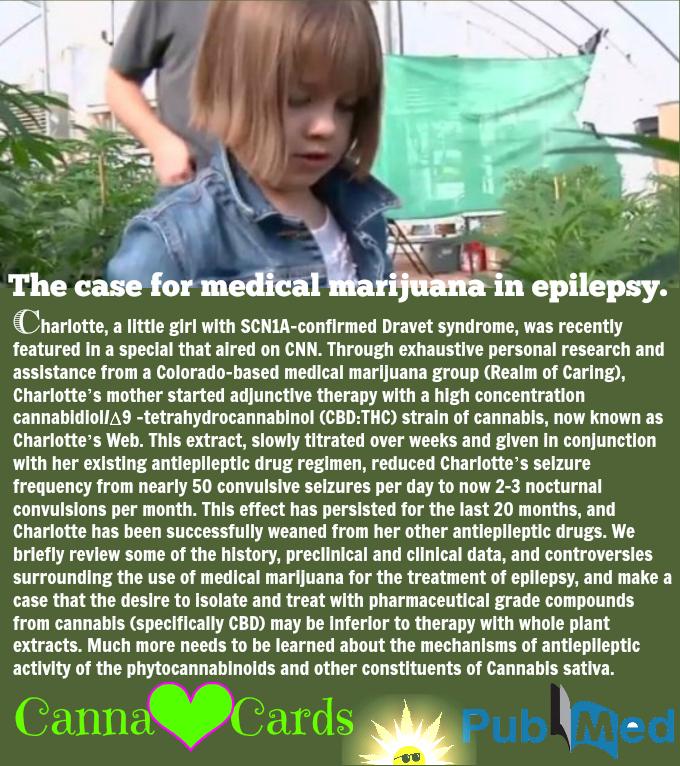2014 May 22. doi: 10.1111/epi.12610. [Epub ahead of print]
 The case for medical marijuana in epilepsy.
The case for medical marijuana in epilepsy.
Abstract
Charlotte, a little girl with SCN1A-confirmed Dravet syndrome, was recently featured in a special that aired on CNN. Through exhaustive personal research and assistance from a Colorado-based medical marijuana group (Realm of Caring), Charlotte’s mother started adjunctive therapy with a high concentration cannabidiol/Δ9 -tetrahydrocannabinol (CBD:THC) strain of cannabis, now known as Charlotte’s Web. This extract, slowly titrated over weeks and given in conjunction with her existing antiepileptic drug regimen, reduced Charlotte’s seizure frequency from nearly 50 convulsive seizures per day to now 2-3 nocturnal convulsions per month. This effect has persisted for the last 20 months, and Charlotte has been successfully weaned from her other antiepileptic drugs. We briefly review some of the history, preclinical and clinical data, and controversies surrounding the use of medical marijuana for the treatment of epilepsy, and make a case that the desire to isolate and treat with pharmaceutical grade compounds from cannabis (specifically CBD) may be inferior to therapy with whole plant extracts. Much more needs to be learned about the mechanisms of antiepileptic activity of the phytocannabinoids and other constituents of Cannabis sativa.
Wiley Periodicals, Inc. © 2014 International League Against Epilepsy.
Wiley Periodicals, Inc. © 2014 International League Against Epilepsy.
KEYWORDS:
CBD , THC , Cannabidiol, Charlotte’s Web, Dravet syndrome, Medically refractory epilepsy



